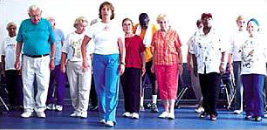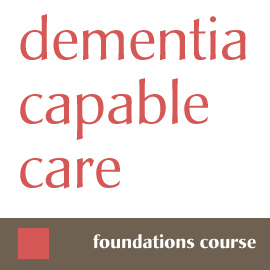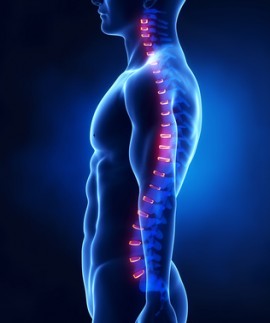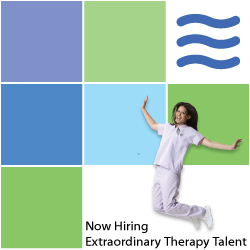 As a rehab-providing entity, we must consider our future clientele and how they tend to make health decisions. Undoubtedly, we will face a different mindset than that of the patients whom we are currently treating. Whereas the current pre-baby-boomer generation does not like to exercise or maintain healthy habits, the baby boomers take a much different approach to self-care. These boomers, born between 1946 and 1964, soon will dominate the healthcare arena. As such, we will need to adapt our current way of doing business in our skilled setting to the changes ahead.
As a rehab-providing entity, we must consider our future clientele and how they tend to make health decisions. Undoubtedly, we will face a different mindset than that of the patients whom we are currently treating. Whereas the current pre-baby-boomer generation does not like to exercise or maintain healthy habits, the baby boomers take a much different approach to self-care. These boomers, born between 1946 and 1964, soon will dominate the healthcare arena. As such, we will need to adapt our current way of doing business in our skilled setting to the changes ahead.
There are 76 million baby boomers who are partly responsible for the huge economic growth of the 1990s. According to the National Association of Area Agencies on Aging, these seniors control more than 70 percent of the country’s disposable income. Baby boomers are upbeat about their future, and they expect to live better and longer lives than the previous generation. The U.S. Census Bureau predicts that boomers will turn 65 years of age at the rate of 10,000 per day for the next decade. These Americans will live longer and healthier lives than any older generation in history, according to Donna Shalala, the President of the University of Miami and a former U.S. Secretary of Health and Human Services during the Clinton administration.
How will these changes affect us in the skilled nursing and rehab industry? Most boomers are confident about their financial futures and their ability to afford long-term care. Many in this generation also feel confident that they will be able to maintain their health for a longer period of time. They enjoy physical activity. A new breed of seniors-only fitness centers has emerged, catering to this specific demographic. This upcoming generation of seniors chooses to avoid the young gym crowds, with loud music and a frantic and noisy atmosphere, in favor of a more mature and gentler approach. These new senior centers have easy-to-use hydraulic equipment and softer music and are far less intimidating. According to the U.S. Health Club Industry, the number of boomers running in marathons has doubled over the past few years. These seniors have new living goals and are looking for more professional help in various medical areas. They are seeking osteoporosis consultations; advice on exercising, reducing cholesterol and alleviating joint pain; and information on gaining better overall strength, flexibility and balance. They want to have a better quality of life in their golden years.
Meanwhile, according to the U.S. Preventative Services Task Force (USPSTF),seniors 65 years of age and older are at great risk for falls. One in three of all non-institutionalized seniors will fall in any one-year period. This is significant. The leading cause of loss of independence and death as a result of a disability is a fall. The number of potential patients due to falls will only increase due to boomers living longer and being more active.
These facts lead to the question: How can boomers and Ensign benefit one another? As a healthcare leader, the Ensign organization has already branched out into various healthcare-related industries with good success. It would seem logical that Ensign should take advantage of this huge opportunity to cater to these seniors’ healthcare needs by creating an outpatient program emphasizing fitness and utilizing our rehab expertise. By demonstrating a professional approach to seniors, we can create a buzz in the community and establish a natural client of the future, while also potentially generating new revenue.
As therapists, we are responsible for creating a vision for the future of our rehab departments. With the constant changes to Medicare and an uncertain healthcare insurance future, we need to be thinking about how we can continue to provide needed services that can attract potential customers. By offering free community health screens, tips on nutrition and exercise, as well as advice on healthy lifestyles, we can become familiar to our community at large. By allowing potential patients to see our facility, who we are and what we provide, we increase the chances that those who need future total knee replacements will request to receive their skilled rehab services at our facility.
The beginning of this journey should start with a simple outpatient program. Determining what it takes to get an outpatient license is the first step. Usually a few simple modifications to any inpatient rehab department is all that is required. An inquiry to the local or county licensing agency will begin the process. Most modifications can be facilitated without a large investment. We are not asking each facility to establish an independent outpatient facility that could cost hundreds of thousands of dollars to start up. We are talking about taking what you already have, making some required changes and establishing an afternoon outpatient program. Do not be afraid to fail your initial inspection, as this will just provide you with the exact insight as to what needs further modification in your facility. Once you are licensed, all that is required is some basic equipment and some knowledge.
We have a natural referral source: ourselves. How many of your patients have inquired about coming back to your facility for their outpatient care? We would just be allowing them to return to a staff and a system with which they are already familiar. You can even be selective as to whom you let return as an outpatient. This allows you to become familiar with the system and grow at a comfortable pace. There is no limit to how many potential patients could be referred or contracted once you are established. A good program should be able to accept at least one new patient per day.
Another source of potential patients for a Skilled Nursing and Rehab Facility is an Assisted Living Facility. Some, even within our own company, have assisted living facilities attached or within close proximity to their skilled facilities. How many potential patients are within an arm’s length? Establishing a protocol that would allow screens, consultations and instructional programs to a high-risk group, such as seniors in an assisted-living facility, could prove to be beneficial for all parties involved. We should be excited about solidifying relationships with assisted living facilities in our community by being a valuable source of prevention and rehabilitation expertise. This could naturally lead to an easy referral from assisted living clientele that are already familiar with their local Ensign facility.
Website design is also an easy way to attract potential patients. Boomers are becoming much more computer-savvy and can “Google” or “Bing” as easy as looking at a phonebook. Websites that are facility-specific with pictures of the actual facilities and actual staff give seniors a chance to get a look at “the old folk’s home down the street.” A “virtual” tour can be just as valuable as an actual facility tour. We just need a chance to break them of their outdated thinking as to what we are as an Ensign building and as a skilled rehab facility.
The growth potential of Ensign and of outpatient services is limitless. By working to meet seniors’ needs in areas related to more than just inpatient services, we ensure that Ensign can continue to be a viable and growing company for many years to come.
by Peter Jens Brandt, DOR, Premier Care Center, Palm Springs, CA
 Alta Vista Rehab in South Texas added a beautiful garden walk about a year ago incorporating different heights of pots of various flowers, plants and vegetables, and uneven surface training with sidewalk, dirt, grass, and stone. Here are some things you might want to consider when adding your therapy garden walk:
Alta Vista Rehab in South Texas added a beautiful garden walk about a year ago incorporating different heights of pots of various flowers, plants and vegetables, and uneven surface training with sidewalk, dirt, grass, and stone. Here are some things you might want to consider when adding your therapy garden walk: ional outcomes, particularly with dementia patients.
ional outcomes, particularly with dementia patients.
 Ensign Services is the proud sponsor of the Dementia Capable Care Foundations Course to be held November 10, 2012. This Foundation course will be held in Santa Rosa, California at the Courtyard Marriott and provides participants with a common framework about Alzheimer’s disease and related dementias (ADRD), a best-abilities perspective, dementia stages, behavior management, and care techniques to promote the best ability to function and person-centered care. Material is presented in a lecture format with small group activities to apply principles learned. Gina Tucker-Roghi, MHS, OTR/L and Therapy Resource for Northern Pioneers, will be the lecturer for this course. Gina is a certified Dementia Care Specialist Instructor for the Dementia Capable Care Foundations Course. She received her B.S in Occupational Therapy from San Jose State University in 1992 and later earned a Masters of Health Science degree from the University of Indianapolis in 2004. In her many years of experience, Gina has specialized in geriatric practice and has extensive experience in the evaluation and treatment of persons with dementia. As a Therapy Resource, she now uses this experience to train other therapists in assessments and treatment approaches to facilitate the best ability to function in persons with dementia.
Ensign Services is the proud sponsor of the Dementia Capable Care Foundations Course to be held November 10, 2012. This Foundation course will be held in Santa Rosa, California at the Courtyard Marriott and provides participants with a common framework about Alzheimer’s disease and related dementias (ADRD), a best-abilities perspective, dementia stages, behavior management, and care techniques to promote the best ability to function and person-centered care. Material is presented in a lecture format with small group activities to apply principles learned. Gina Tucker-Roghi, MHS, OTR/L and Therapy Resource for Northern Pioneers, will be the lecturer for this course. Gina is a certified Dementia Care Specialist Instructor for the Dementia Capable Care Foundations Course. She received her B.S in Occupational Therapy from San Jose State University in 1992 and later earned a Masters of Health Science degree from the University of Indianapolis in 2004. In her many years of experience, Gina has specialized in geriatric practice and has extensive experience in the evaluation and treatment of persons with dementia. As a Therapy Resource, she now uses this experience to train other therapists in assessments and treatment approaches to facilitate the best ability to function in persons with dementia.






 The passion that leads a person to start a business (think Ensign Group) … that thing you would do (therapy) regardless of monetary compensation (and I realize that for some, money itself — or the pursuit of it — is that passion) … that thing that makes your heart beat fast … is the work you should be doing. The work you do that fulfills you and gives — rather than depletes — energy is the ultimate goal. Yes, goal. It’s the “continuing” that matters, not what you accomplish “one day,” but what you do every single day.
The passion that leads a person to start a business (think Ensign Group) … that thing you would do (therapy) regardless of monetary compensation (and I realize that for some, money itself — or the pursuit of it — is that passion) … that thing that makes your heart beat fast … is the work you should be doing. The work you do that fulfills you and gives — rather than depletes — energy is the ultimate goal. Yes, goal. It’s the “continuing” that matters, not what you accomplish “one day,” but what you do every single day.